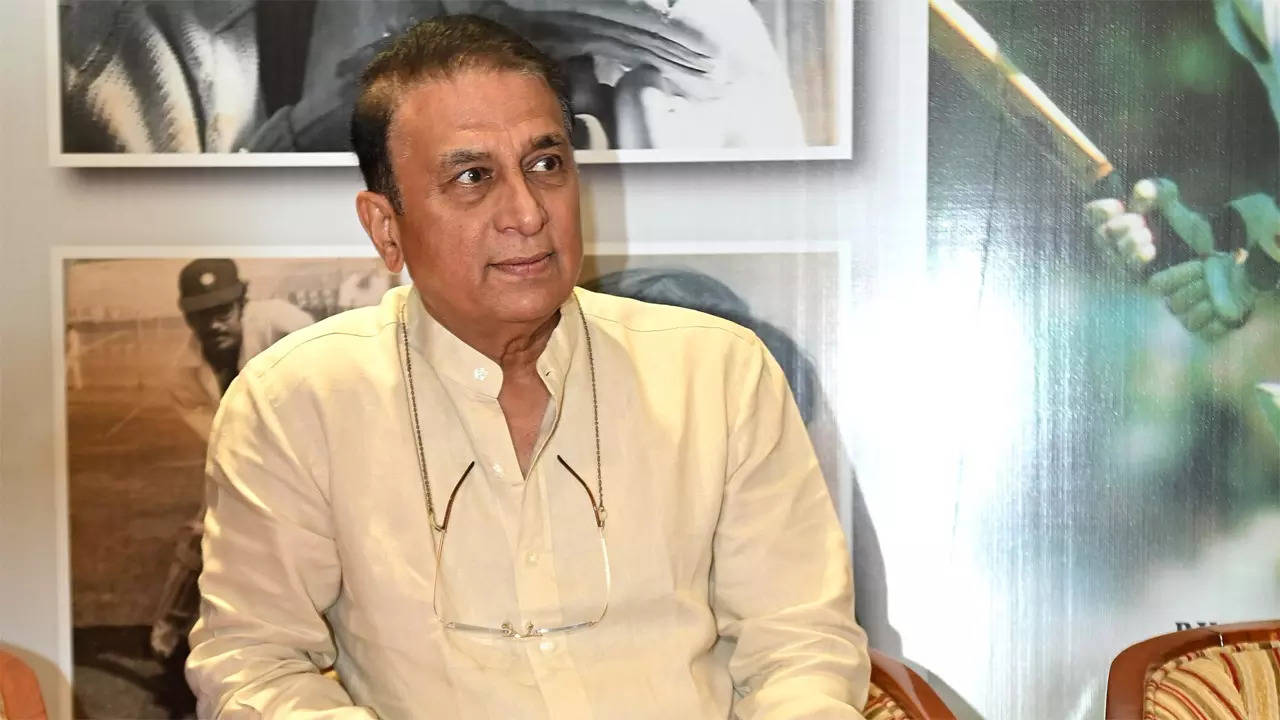NEW DELHI: India legend Sunil Gavaskar, celebrating his 75th birthday, remains an iconic figure in cricket, revered for his impeccable technique and ability to handle both fast and spin bowlers. His debut series in 1971 against the West Indies, where he scored 774 runs and led India to a historic series win, is often highlighted as one of cricket’s greatest achievements.
Former India batter Chandu Borde recalls the anticipation that surrounded Gavaskar’s entry into international cricket. “Gavaskar made his debut two years after my retirement. But we had already been told by (late) Ajit Wadekar about a talented Bombay boy who could make a lot of runs for India. Didn’t he make a lot of runs,” Borde was quoted as saying by PTI.
Gavaskar’s success in cricket is often attributed to his unrivaled concentration and watertight technique. Borde remarked, “It’s his concentration and a water-tight technique. I have not seen a better stance than that of him, and he watched the ball so closely. Of course, he could play most of the shots but used them wisely. He was a very practical batsman, knew what to do when.”
The legendary performance during the 1971 West Indies series was commemorated in a Calypso by ‘Lord Relator,’ with the lyrics, “It was Gavaskar. De real master. Just like a wall. We couldn’t out Gavaskar at all, not at all,” capturing the essence of his masterful batting.
Gavaskar is celebrated for his battles against renowned pacers such as Andy Roberts, Michael Holding, Malcolm Marshall, and Imran Khan. However, his skill against spinners also stands out. He rated England’s Derek Underwood as the toughest spinner he faced and effectively countered other proficient spinners like Abdul Qadir and Tauseef Ahmed of Pakistan, and John Emburey from England.
Former Indian middle-order batter Mohinder Amarnath recognizes Gavaskar’s technical prowess against spin. “Sunny had brilliant footwork, and could use soft hands (against spin). Since he used to watch the ball very closely, he could play spinners late and he never really got into awkward positions against them,” Amarnath stated.
Gavaskar also showed his ability to dominate bowlers when necessary. He famously hit a six off Malcolm Marshall to equal Sir Donald Bradman’s then world record of 29 Test hundreds. His sole ODI century, a quick-fire 103 runs against New Zealand during the 1987 World Cup, came off just 88 balls.
Former Mumbai batter Milind Rege believes Gavaskar’s defensive style in international cricket was a product of his times. “Perhaps, the need of that time forced Gavaskar to go defensive while playing for India. But he could always dominate attacks and he often did that in the domestic circuit. He could pull and hook with as much ease as anyone else,” Rege remarked.
Former India batter Chandu Borde recalls the anticipation that surrounded Gavaskar’s entry into international cricket. “Gavaskar made his debut two years after my retirement. But we had already been told by (late) Ajit Wadekar about a talented Bombay boy who could make a lot of runs for India. Didn’t he make a lot of runs,” Borde was quoted as saying by PTI.
Gavaskar’s success in cricket is often attributed to his unrivaled concentration and watertight technique. Borde remarked, “It’s his concentration and a water-tight technique. I have not seen a better stance than that of him, and he watched the ball so closely. Of course, he could play most of the shots but used them wisely. He was a very practical batsman, knew what to do when.”
The legendary performance during the 1971 West Indies series was commemorated in a Calypso by ‘Lord Relator,’ with the lyrics, “It was Gavaskar. De real master. Just like a wall. We couldn’t out Gavaskar at all, not at all,” capturing the essence of his masterful batting.
Gavaskar is celebrated for his battles against renowned pacers such as Andy Roberts, Michael Holding, Malcolm Marshall, and Imran Khan. However, his skill against spinners also stands out. He rated England’s Derek Underwood as the toughest spinner he faced and effectively countered other proficient spinners like Abdul Qadir and Tauseef Ahmed of Pakistan, and John Emburey from England.
Former Indian middle-order batter Mohinder Amarnath recognizes Gavaskar’s technical prowess against spin. “Sunny had brilliant footwork, and could use soft hands (against spin). Since he used to watch the ball very closely, he could play spinners late and he never really got into awkward positions against them,” Amarnath stated.
Gavaskar also showed his ability to dominate bowlers when necessary. He famously hit a six off Malcolm Marshall to equal Sir Donald Bradman’s then world record of 29 Test hundreds. His sole ODI century, a quick-fire 103 runs against New Zealand during the 1987 World Cup, came off just 88 balls.
Former Mumbai batter Milind Rege believes Gavaskar’s defensive style in international cricket was a product of his times. “Perhaps, the need of that time forced Gavaskar to go defensive while playing for India. But he could always dominate attacks and he often did that in the domestic circuit. He could pull and hook with as much ease as anyone else,” Rege remarked.

